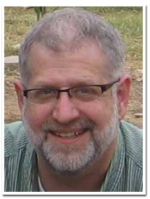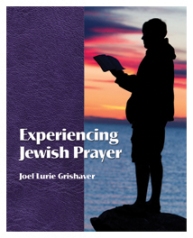Ira J. Wise
 There have been a number of articles and a bit of buzz about making religious school more like camp. My teacher Jeffrey Kress wrote “So, You Want Your School To Be More Like Camp?” back in March. My camp counselor and colleague Roberta Louis Goodman has created “Camp NSCI” for the 3rd and 4th graders at North Shore Congregation Israel in suburban Chicago:
There have been a number of articles and a bit of buzz about making religious school more like camp. My teacher Jeffrey Kress wrote “So, You Want Your School To Be More Like Camp?” back in March. My camp counselor and colleague Roberta Louis Goodman has created “Camp NSCI” for the 3rd and 4th graders at North Shore Congregation Israel in suburban Chicago:
“Camp NSCI with its ruach (spirit) interpreting Torah through drama games and film making, and cool materials for visual arts, Hebrew chuggim (electives) that have included sports, cooking, smartboard, computers, ipads, yoga, games, singing, visual arts and more!”
And even one of my congregants, who grew up at Camp Ramah has asked for our music curriculum to become more like his camp memories (I think we are almost there, Ted!).
I have been thinking for a while about this and what I might have to say here. My first impulse is to agree with much of what Jeff has to say in his article in the Jewish Week. We have to ask what about camp do we want to emulate. And like him, I believe there are certainly some aspects we can draw from the camp experience. And I will blog on that later in the summer. From Eisner Camp. Where I am going on Sunday. Because camp is a huge part of why I became a Jewish educator.
But here’s the thing: while there are many facets to what is the “essence” of Jewish camping, I believe it all comes down to the 24/6+Shabbat aspect. It is the total immersion of the camper in the community of camp. It is the keeping of parents and school friends at arm’s length for 2 – 8 weeks that allows the camper to enter a completely different head space. There are mores at camp that have little meaning at home. Some good, some less attractive. But they are components of an immersive culture that take campers to a different world. Eisner director Louis Bordman calls it being “under the bubble.” It is a magical place. And so is nearly every other Jewish camp.
But that was all my first impulse. Yesterday my Club Ed shipment arrived from Torah Aura Productions. Inside was a copy of Experiencing Jewish Prayer. Wow.
So I grew up at Olin Sang Ruby Union Institute in Oconomowoc, Wisconsin. Where Joel Lurie Grishaver tested what eventually became Shema is For Real and the Prayerbook Board Game. As a camper in 1975, I remember the staff and my rabbi, Mark S. Shapiro, taking us on a journey through Jewish prayer each day during Shiur/Sicha (today we call it Limmud), culminating in the Prayerbook Board Game. It was the second iteration of the program since Joel had developed it and OSRUI had published it.
Since then, Joel has used it as a springboard for the Shema is for Real Hebrew curriculum and he has revised the original as the All New Shema is for Real. He has been doing the experiential approach to teaching prayer for longer than most people have been able to spell experiential. Each version was designed for a new generation of teacher and student. Yet each left a decidedly “classroom” feel to it.
 Experiencing Jewish Prayer is something else. In some ways it is another take on Shema is for Real, which is a very good thing. But it is so much more. As I read through it this morning, I was imagining teaching with it. I didn’t feel myself in a classroom. I felt like I was under a tree or on the Quad at Eisner having a lot of fun with campers who were getting into the idea of talking about and more importantly playing with the idea of prayer.
Experiencing Jewish Prayer is something else. In some ways it is another take on Shema is for Real, which is a very good thing. But it is so much more. As I read through it this morning, I was imagining teaching with it. I didn’t feel myself in a classroom. I felt like I was under a tree or on the Quad at Eisner having a lot of fun with campers who were getting into the idea of talking about and more importantly playing with the idea of prayer.
There is a version of the classic four corners game with several questions about God. The visual representation makes it easy for a teacher who has never been to camp to visualize how to make it work in a classroom. There are texts for chevruta study. In invitation to create a human sculpture of a car wash that feels like it comes from the New Games Book—a standard in my library as a camp counselor. (You should get one!) To understand the idea of long and short brakhot, it invites students to team up, get a siddur and analyze actual brakhot to determine which is which. It is filled with stories and analogies and metaphors.
I still believe that for religious school to become like camp, we need to keep the students overnight for a few weeks and separate them from their own bedrooms and social media. But I think that the peulot (activities) in this book will give my teachers a very real opportunity to make prayer come alive in ways we had only been able to do at camp or in youth group. I am buying one copy for every teacher in the relevant grades to start off. And one grade will be using this as a text as well.
If you are not a member of Club Ed (Torah Aura’s review approval service), then call them at 800 BE TORAH and order a copy for your review. You will be glad you did.

